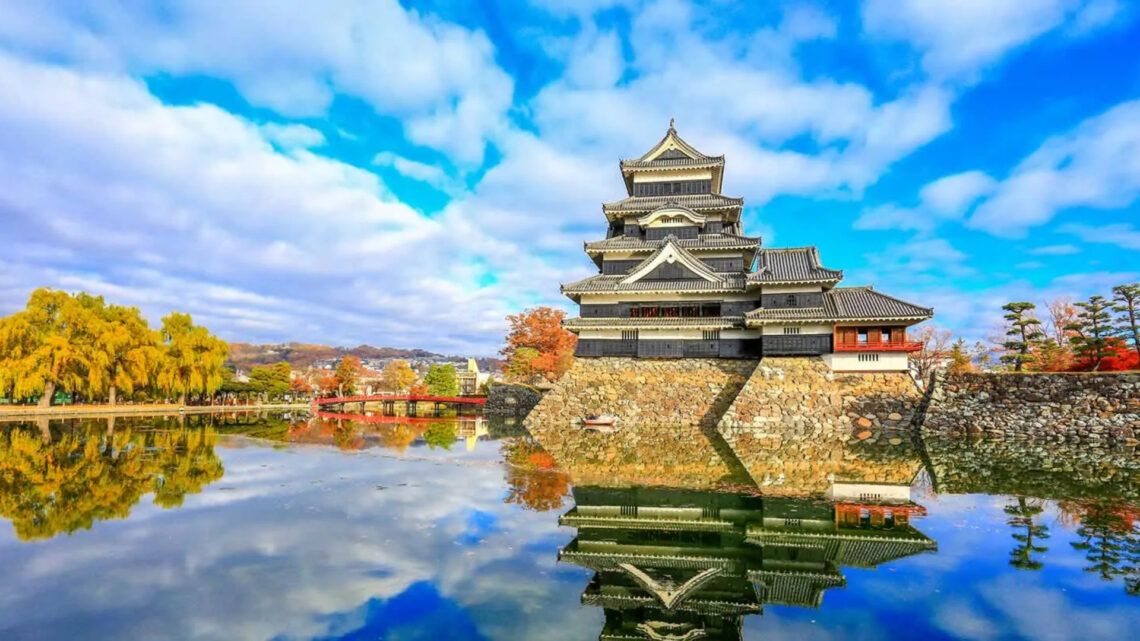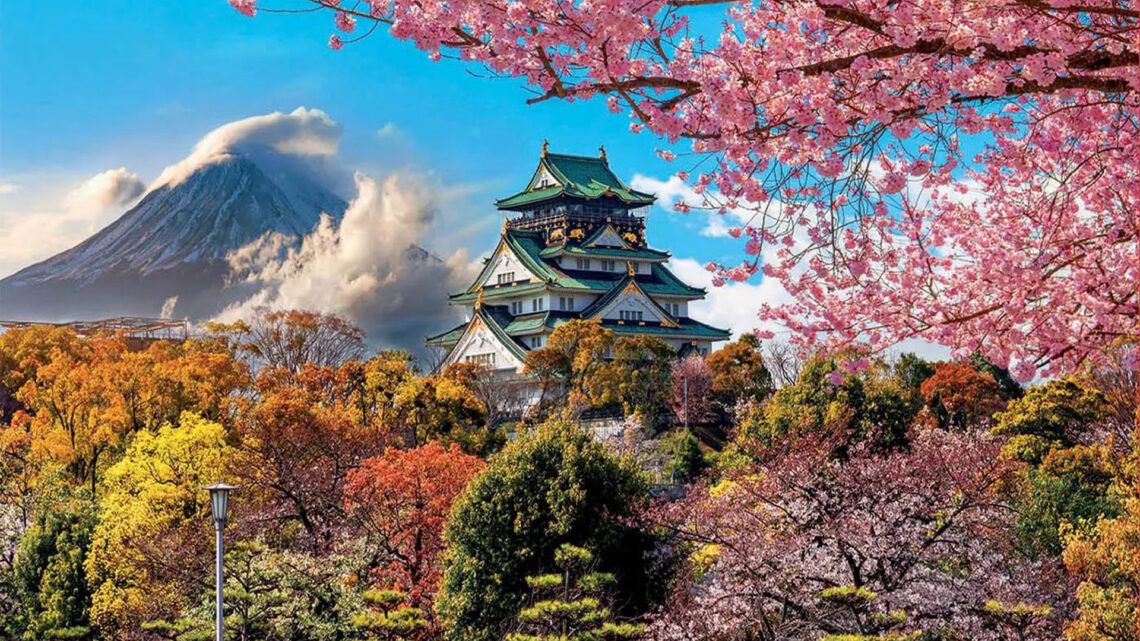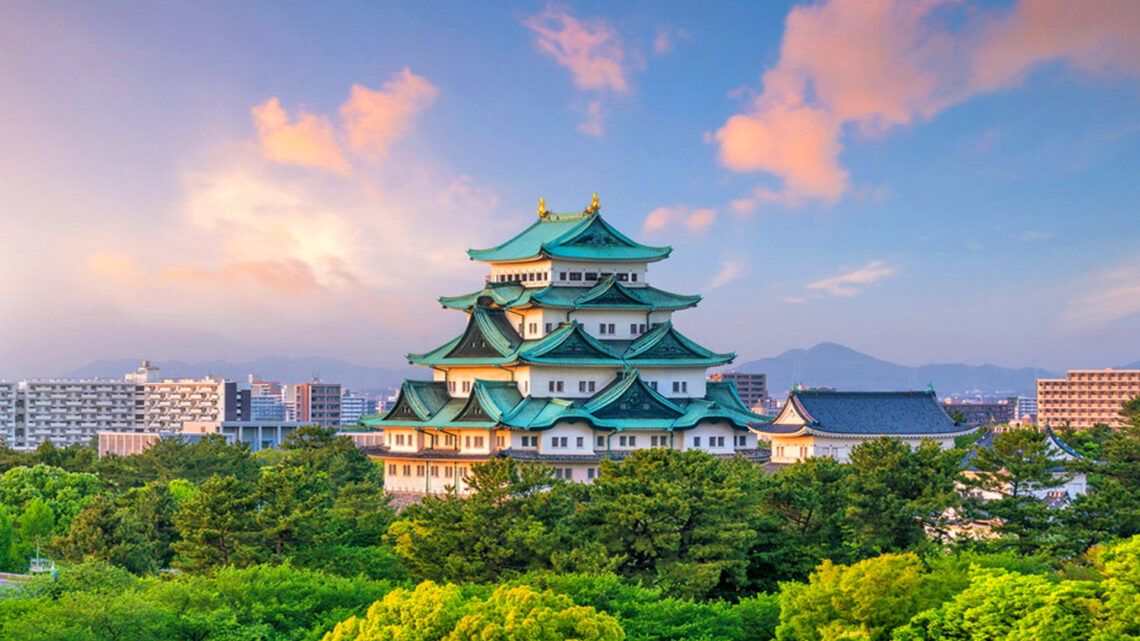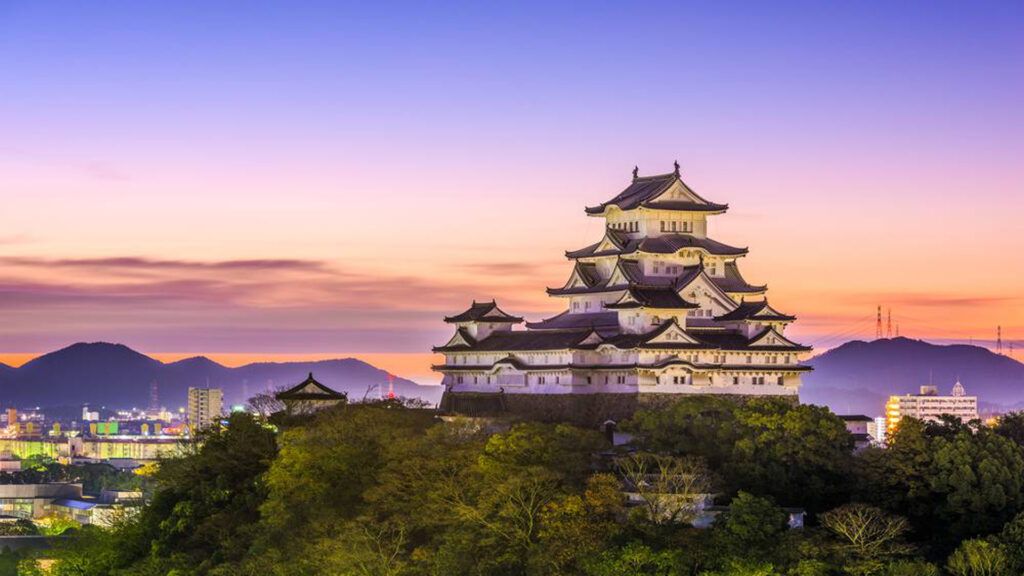
Himeji Castle, also known as the “White Heron”, is one of the most impressive and best-preserved castles in Japan. It is a remarkable example of 17th-century Japanese architecture and is listed as a UNESCO World Heritage site. Located in the city of Himeji in Hyogo Prefecture, the castle attracts millions of visitors every year who come to admire its complex defensive systems, stunning aesthetics, and historical significance.
The origins of Himeji Castle date back to the 14th century when a fortified post was first built on Himeyama Hill in 1333. This occurred during the turbulent Nanboku-cho period, a time marked by conflict between the northern and southern imperial courts. The castle initially served as a strategic military base to monitor the surrounding area.
In 1581, the famous Japanese warlord Toyotomi Hideyoshi was tasked with expanding the fort. He added a three-story castle structure, laying the foundation for future expansion. However, it was Tokugawa Ieyasu, following his victory at the Battle of Sekigahara in 1600, who assigned his son-in-law, Ikeda Terumasa, to transform Himeji Castle into the magnificent structure it is today.
The construction, which took place between 1601 and 1609, turned Himeji Castle into one of the largest and best-fortified castles in the region. Terumasa used the opportunity to make the castle a symbol of the power and influence of the Tokugawa dynasty. As a result, the castle became both a military stronghold and a symbol of stability and the beginning of the Edo period.
Himeji Castle is renowned for its sophisticated and thoughtful architecture, designed for both defense and aesthetic appeal. The main feature is its massive five-story central tower (Tenshu), which rises prominently over the landscape and is visible from afar. Standing at about 46 meters tall, it was one of the tallest structures of its time.
The castle earned the nickname “White Heron” due to its bright white exterior walls, made from a special plaster. These walls not only add to its aesthetic beauty but also provided protection against fire, a critical feature in a time when many castles were built of wood.
Another outstanding aspect of the castle is its complex defense system. The design of the castle makes it incredibly difficult for potential attackers to advance. A network of winding paths, walls, and gates, arranged like a labyrinth, ensured that intruders could easily become disoriented on their way to the main tower. The narrow pathways forced them to move slowly, while defenders could attack from elevated positions using arrows and hot oil.
The walls of Himeji Castle are also notable, featuring small openings through which defenders could shoot arrows or muskets. These “stone-throwing holes” or “Teppô-mado” allowed defenders to strike attackers while remaining relatively safe.
Himeji Castle is not only famous for its architectural brilliance but also for its symbolic importance. During the Edo period (1603–1868), Japan was largely isolated from the outside world and experienced a time of internal peace and stability. Castles like Himeji became symbols of the Tokugawa government’s power and the samurai culture that dominated Japanese society.
The castle represented the strength and ingenuity of the samurai who ruled the region, serving as both a political center and the residence of its lord. It was a symbol of prosperity and protection, but also a reminder of the military conflicts that had shaped Japan in previous centuries.
After the feudal system in Japan ended with the Meiji Restoration in 1868, the role of castles like Himeji changed dramatically. Many castles were demolished or fell into disrepair as they were no longer needed as centers of political or military power. Fortunately, Himeji Castle survived this period relatively unscathed and was recognized as a cultural treasure of Japan.
During World War II, the city of Himeji was heavily bombed, but the castle miraculously remained undamaged, further solidifying its reputation as a protective symbol and an important part of Japanese culture. In 1993, Himeji Castle was added to the UNESCO World Heritage list, and it continues to be preserved as one of the most significant examples of Japanese architecture.
Between 2009 and 2015, extensive restoration work was carried out to preserve the castle in its original splendor. These efforts included cleaning and repairing the exterior walls and restoring the roof tiles. The goal was to maintain the historical authenticity of the castle while ensuring its preservation for future generations.
Activities in and around Himeji

In addition to the famous Himeji Castle, Himeji and its surrounding region offer a wide range of activities and attractions for travelers. From historical sites and cultural experiences to natural beauty, the area has something for everyone. Here are some of the top things to do in Himeji.
Visit Koko-en Garden
Koko-en Garden is a beautiful Japanese landscape garden located right next to Himeji Castle. This expansive garden consists of nine separate garden areas, all designed in the traditional style of the Edo period (1603–1868). Each garden has a unique design, including a tea garden, a waterfall garden, a bamboo grove, and a koi pond.
A highlight of the visit is the opportunity to participate in a traditional Japanese tea ceremony in one of the garden’s teahouses. Koko-en offers a peaceful and relaxing atmosphere, making it the perfect place to unwind after exploring Himeji Castle and to appreciate the beauty of Japanese garden art.
Engyo-ji Temple on Mount Shosha
Engyo-ji Temple on Mount Shosha is a significant Buddhist temple complex and a popular destination for both pilgrims and nature lovers. The temple is located in the hills above Himeji and offers stunning views of the city and the surrounding countryside.
Founded in the 10th century, the temple features several impressive wooden buildings connected by picturesque forest paths. The main halls, Maniden and Daikodo, showcase traditional Buddhist architecture and art.
Visitors can either hike up the mountain or take the Shoshazan Ropeway, which provides a convenient way to reach the temple. Engyo-ji was also a filming location for the movie The Last Samurai, making it a popular spot for film enthusiasts.
Shoshazan Ropeway
For those who prefer not to hike, the Shoshazan Ropeway offers an enjoyable way to ascend Mount Shosha. The ropeway travels through forested hills and provides spectacular views of Himeji’s landscape during the ride. Once at the top, visitors have easy access to Engyo-ji Temple and can explore the surrounding area on scenic walking trails. The view from the ropeway is especially breathtaking in autumn when the leaves turn vibrant shades of red and gold.
Himeji City Museum of Art
Located near Himeji Castle, the Himeji City Museum of Art is housed in a historic red-brick building that was once a military barracks. The museum features a diverse collection of Japanese and Western artworks, including works by famous Japanese artists as well as European painters from the 19th and 20th centuries.
In addition to its permanent exhibitions, the museum hosts special exhibits on various artistic and cultural topics. It’s a great spot for art lovers interested in learning more about Japan’s artistic history and international influences.
Himeji City Aquarium
Himeji City Aquarium is a family-friendly attraction located just outside the city center in Tegarayama Park, a large recreational park on a hill overlooking the city. The aquarium showcases a variety of marine life from both local and exotic waters.
Visitors can explore different ecosystems recreated within the aquarium, such as mangrove forests, coral reefs, and rivers. There are also touch pools where visitors can interact with marine animals up close. It’s an ideal spot for families with children who are curious about sea life.
Tegarayama Central Park
Tegarayama Central Park is a sprawling park complex that offers various attractions, including the Himeji City Aquarium, a planetarium, and numerous walking paths with beautiful views of the city. The park stretches over several hills, and from the highest points, visitors can enjoy impressive views of Himeji and the castle.
In spring, the park becomes a popular spot for hanami (cherry blossom viewing) as many cherry trees bloom in the area. The park also features sculptures and monuments that reflect the region’s rich history, making it a great choice for a relaxed day outdoors.
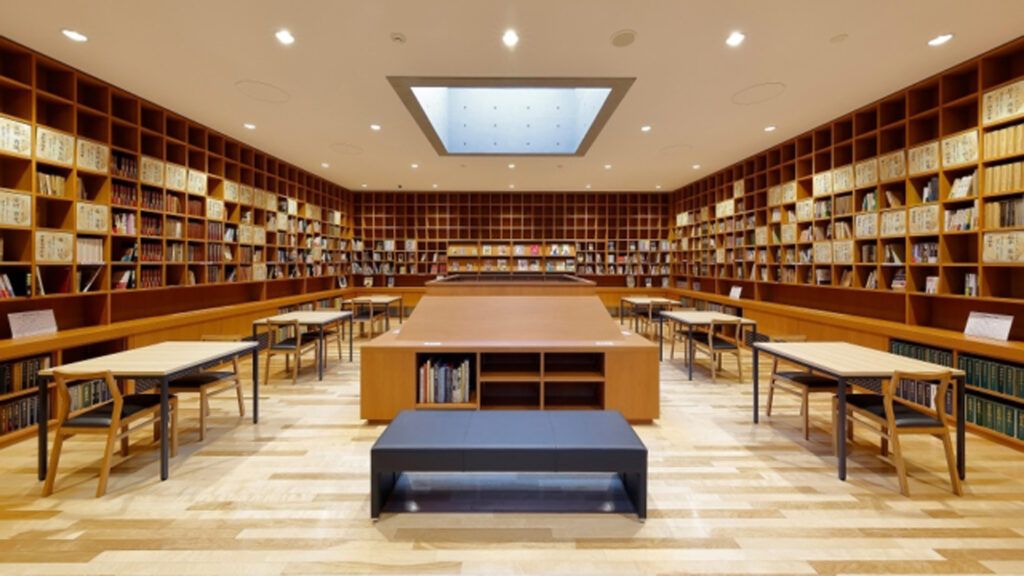
Himeji Literature Museum
The Himeji Literature Museum is a hidden gem in the city, perfect for literature enthusiasts. The museum is dedicated to the life and work of famous Japanese writers who either hail from the region or were inspired by Himeji.
The museum is housed in an elegant modern building surrounded by a beautiful garden, providing a peaceful environment for visitors to immerse themselves in the world of Japanese literature. Alongside exhibits on Japanese authors, the museum regularly hosts readings, lectures, and cultural events, offering a fascinating look into Japan’s literary heritage.
Hiking in the Region
Nature lovers will find plenty of hiking trails in the hills and mountains surrounding Himeji. Mount Shosha is a popular destination for hikers, offering not only the Engyo-ji Temple but also many scenic viewpoints and peaceful trails through the forest. Hikers can enjoy the local flora and fauna while taking in views of Himeji Castle and the city below.
Another beautiful hiking route runs along the Himeji-Nada coastline, which follows the Seto Inland Sea. Here, hikers can take in breathtaking ocean views and explore quaint fishing villages.
Shikama Harbor and Boat Tours
Shikama Harbor, located just outside Himeji, offers a maritime atmosphere and is a great place to learn about the region’s fishing industry. From the harbor, visitors can take boat tours along the coast and gain insight into local sea culture.
There are also opportunities to join fishing boat tours, where you can experience firsthand how fishermen catch their daily haul. These tours offer a fascinating glimpse into seaside life and are a fantastic activity for visitors looking for something off the beaten path.
Shopping on Miyuki-dori Street
Miyuki-dori Street is the main shopping street in Himeji, located near Himeji Station. It offers a wide variety of shops, boutiques, restaurants, and souvenir stores, with a mix of modern and traditional products. From local delicacies to clothing and gifts, Miyuki-dori has something for everyone.
The street is partially covered, making it a pleasant shopping destination even in bad weather. It’s the perfect spot to stroll, shop, or enjoy a meal after a day of sightseeing at the castle.
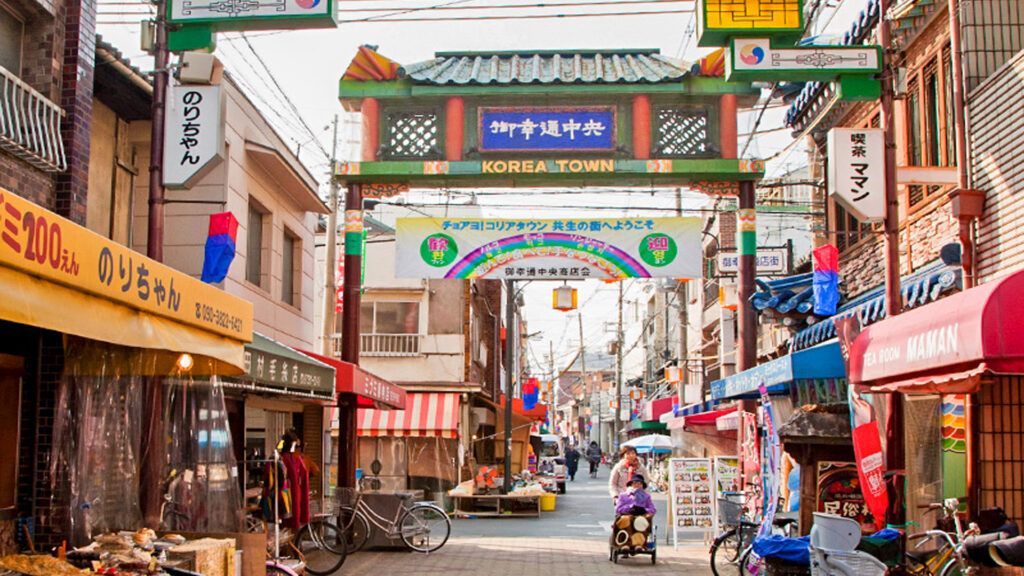
Himeji offers a variety of activities that go beyond the visit to its famous castle. Whether you’re interested in nature, culture, history, or shopping, the city and its surroundings have something for everyone, ensuring a diverse and unforgettable experience.
Getting to and Visiting Himeji Castle
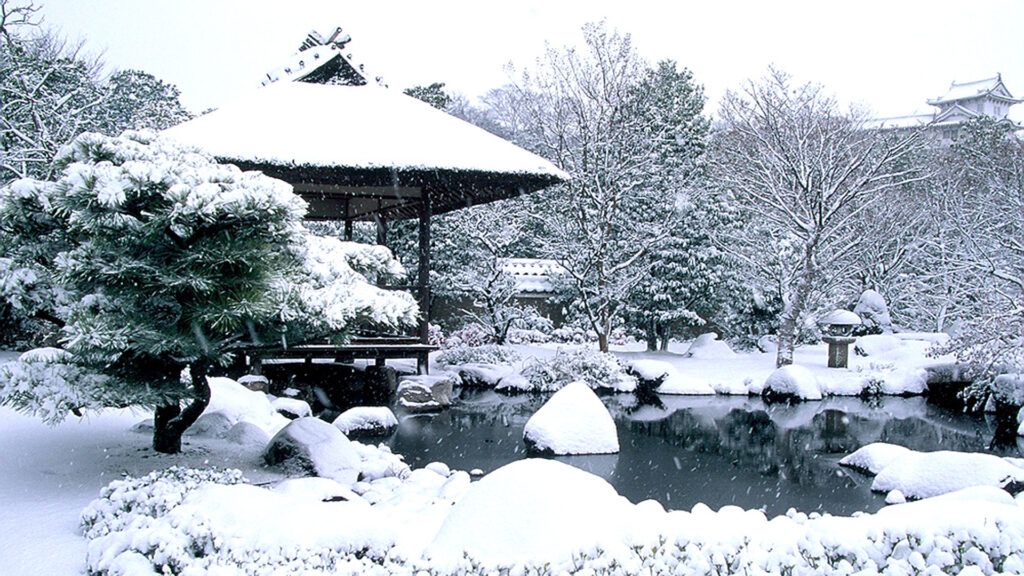
Visiting Himeji Castle is a fascinating experience for travelers. The exploration typically starts at the main gate (Otemon), where visitors get a spectacular view of the main keep. The path through the castle passes through several courtyards, watchtowers, and defensive structures, providing insight into Japan’s military history.
Inside the main keep, several floors are connected by steep wooden stairs, and the upper levels offer a breathtaking panoramic view of Himeji city and the surrounding landscape, making it one of the highlights of the visit.
Himeji Castle is not only one of Japan’s most significant historical landmarks but also easily accessible for visitors from various parts of the country. Thanks to its well-developed infrastructure and proximity to the city of Himeji, it’s a popular destination for both tourists and locals. Below are various ways to reach Himeji Castle.
Getting There by Train
The most convenient and fastest way to reach Himeji Castle is by train. Himeji is located along one of Japan’s major railway lines and is well connected to the national rail network.
From Osaka
If you’re in Osaka, the train ride to Himeji takes about 30 minutes by Shinkansen (bullet train). The main Shinkansen station in Osaka is Shin-Osaka, where you can board the Tokaido-Sanyo Shinkansen, which stops at Himeji on its way to Hiroshima or Fukuoka. For a cheaper option, though a bit longer (about 1 hour), you can take the JR Special Rapid Service trains from Osaka to Himeji.
From Kyoto
From Kyoto, the Shinkansen takes about 45 minutes to reach Himeji. The Tokaido-Sanyo Shinkansen operates regularly between Kyoto and Himeji. For a more budget-friendly option, the JR Special Rapid Service takes about 90 minutes to reach Himeji.
From Tokyo
Traveling from Tokyo to Himeji takes about 3 hours by Shinkansen. You’ll take the Tokaido-Sanyo Shinkansen from Tokyo, transferring either in Osaka or Shin-Kobe. The journey offers a scenic view of Japan’s urban and rural landscapes as you pass through some of the country’s major cities.
From Kansai Airport (KIX)
For international visitors arriving at Kansai International Airport (KIX), there is a direct connection via the JR Haruka Express, which first takes you to Osaka. From there, you can either board the Shinkansen or a regular JR train to Himeji. The total travel time is about 1.5 to 2 hours.
Once you arrive at Himeji Station, Himeji Castle is just a 15-minute walk away, with clear signage along the route. Alternatively, you can take a local bus that will drop you off at the castle’s main entrance in just a few minutes.
Getting There by Car
For travelers who prefer to drive, Himeji is easily accessible by car. The city is located along major expressways, making it easy to reach from various directions.
From Osaka
The drive from Osaka to Himeji takes about 1.5 hours using the Hanshin Expressway and Sanyo Expressway. Both roads offer quick connections, but it’s advisable to check traffic conditions, especially during peak hours, as there can be congestion around Osaka.
From Kyoto
The drive from Kyoto to Himeji takes around 2 hours via the Meishin Expressway and Sanyo Expressway. This route passes through scenic landscapes, allowing you to enjoy views of the Japanese countryside along the way.
Parking
There are several parking lots for visitors near Himeji Castle, both close to the castle and in the city center. Since the castle is a popular tourist destination, it’s a good idea to arrive early, especially on weekends and holidays, when parking can fill up quickly.
Getting There by Bus
There are regional and long-distance bus routes that connect to Himeji, which can be a good option for budget-conscious travelers.
Long-Distance Buses from Tokyo or Osaka
Long-distance buses provide an affordable way to travel from major cities like Tokyo or Osaka to Himeji. However, the trip from Tokyo by bus can take up to 9 hours, while the ride from Osaka takes about 2 hours. These buses are usually comfortable, often offering amenities like Wi-Fi to make the long journey more pleasant.
Local Buses
Himeji has a well-developed local bus network that connects various city attractions. Local buses run regularly from Himeji Station to Himeji Castle. There are also sightseeing buses designed specifically for tourists, offering a convenient way to visit multiple attractions in one day.
Getting There by Air
Although Himeji does not have its own airport, Kansai International Airport (KIX) near Osaka is a good option for international travelers. After arriving at Kansai, you can easily continue your journey to Himeji by train or rental car. Alternatively, Kobe Airport, which is closer to Himeji, offers domestic flights and is a convenient option for travelers within Japan.
Getting There by Ferry
For those traveling from the nearby island of Shikoku or other parts of Japan, there are also options to reach Himeji by sea. Ferry routes provide a relaxed and scenic way to travel, connecting several cities along Japan’s coast to ports near Himeji.
No matter which method of transportation you choose—train, car, bus, or a combination of these—Himeji Castle is easy and convenient to reach. Its central location and excellent transport connections make Himeji a rewarding destination, whether you’re visiting for a day or staying longer.
Accommodations in and Around Himeji

Visitors to Himeji Castle have a wide range of accommodation options to suit different budgets and preferences. From luxury hotels to cozy ryokan (traditional Japanese inns) and budget-friendly hostels, Himeji offers something for every traveler. Below are some of the best places to stay in Himeji and the surrounding area.
Luxury Hotels
Hotel Nikko Himeji
Hotel Nikko Himeji is one of the more luxurious hotels in the city, located just a short walk from Himeji Station. It offers elegant rooms with modern amenities and top-notch service. One of the highlights is the view of Himeji Castle from the upper floors of the hotel. Amenities include multiple restaurants serving both local and international cuisine, a fitness center, and an indoor pool. Its proximity to both the station and the castle makes Hotel Nikko a convenient choice for travelers seeking comfort and style.
Setre Highland Villa Himeji
This boutique hotel, located in the hills outside the city center, provides a serene and luxurious atmosphere. The rooms are stylishly modern, with many offering panoramic views of the surrounding mountains and distant views of Himeji Castle. The hotel features its own spa and a renowned restaurant known for its gourmet cuisine. Setre Highland Villa is perfect for travelers looking for a luxurious yet peaceful retreat.
Mid-Range Hotels
Daiwa Roynet Hotel Himeji
Just a few minutes’ walk from Himeji Station, this modern hotel offers an excellent balance of comfort and affordability. The rooms are spacious and stylishly designed, equipped with modern amenities such as free Wi-Fi and flat-screen TVs. The hotel’s restaurant serves a diverse breakfast buffet with both Japanese and Western dishes. Daiwa Roynet is popular among business travelers and tourists alike who value its central location and good service.
Comfort Hotel Himeji
Another popular mid-range hotel near Himeji Station is the Comfort Hotel. The rooms are simple but comfortable, providing all the essentials for a pleasant stay. The hotel offers free breakfast and complimentary Wi-Fi throughout. Its close proximity to Himeji Castle makes it an excellent choice for tourists looking for good value for money.
Traditional Ryokan
Yumoto Ueyama Ryokan
For those who want to experience traditional Japanese accommodation, Yumoto Ueyama Ryokan is an excellent choice. Located about 30 minutes outside Himeji in a picturesque mountain setting, this ryokan offers an authentic experience with tatami mat rooms, futons, and hot springs (onsen). Guests can enjoy the peaceful atmosphere and relax in the natural hot spring baths. The ryokan also serves traditional Japanese kaiseki meals made from local ingredients.
Kappo Ryokan Shibata
Closer to the city center, Kappo Ryokan Shibata offers a charming, family-run atmosphere. The rooms feature traditional Japanese decor with tatami floors and sliding paper doors. While it doesn’t have onsen baths, the ryokan is known for its excellent cuisine, made with fresh, seasonal ingredients. It’s a great option for travelers who want to experience Japanese hospitality without venturing too far from the city.
Vacation Rentals and Alternative Accommodations
Airbnb in Himeji
For travelers who prefer a private stay, Himeji also offers a variety of Airbnb options. Many of these accommodations are located near Himeji Castle or in quiet residential neighborhoods. From modern apartments to traditional Japanese houses, there are plenty of choices to make your stay in Himeji both flexible and enjoyable. Airbnb is particularly well-suited for families or groups needing more space and privacy.
Minpaku (Private Accommodation)
In Japan, you can also book minpaku accommodations, where private homeowners host guests in their own homes. This type of stay offers an authentic experience and the chance to connect with locals. Minpaku options in Himeji are often more affordable than hotels and provide a unique opportunity to experience everyday Japanese life more closely.
Himeji offers a wide range of accommodation options that cater to different needs and budgets. From luxury hotels with first-class service to traditional ryokan and budget-friendly hostels or vacation rentals, visitors have plenty of choices, all of which serve as a convenient base for exploring Himeji Castle and the surrounding attractions. No matter which type of accommodation you choose, a stay in Himeji is sure to be a pleasant and memorable experience.
My personal conclusion

Himeji Castle is much more than just a historical building. It is a living symbol of Japanese culture and history, representing the transition from times of war to an era of peace and stability. With its impressive architecture, rich history, and significance as a UNESCO World Heritage site, the castle remains an indispensable part of Japan’s cultural heritage. A visit to Himeji Castle is not only a journey into the past but also an opportunity to experience the beauty and spirit of Japanese architecture up close.

